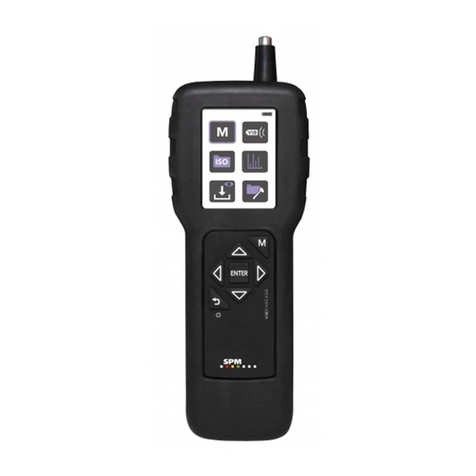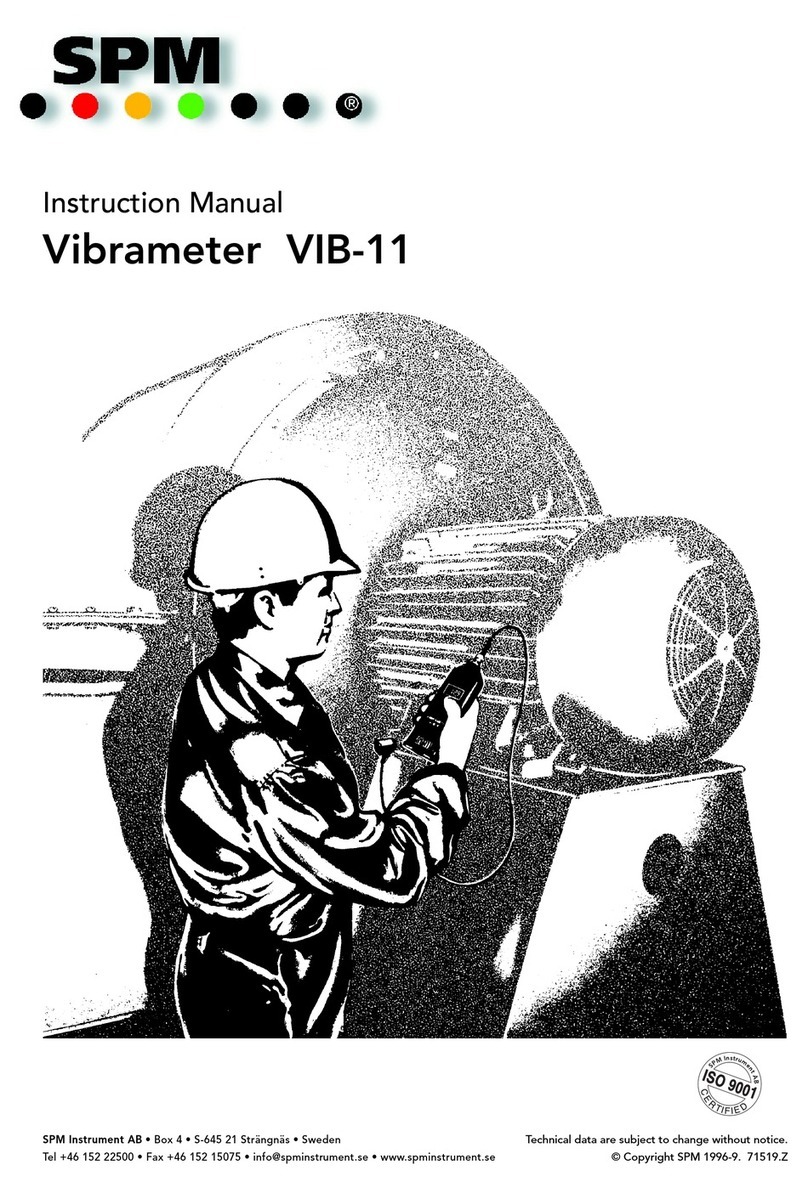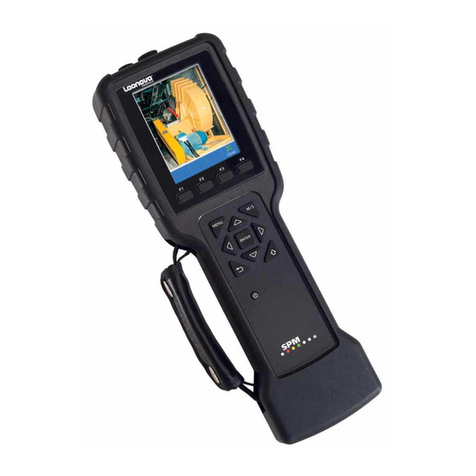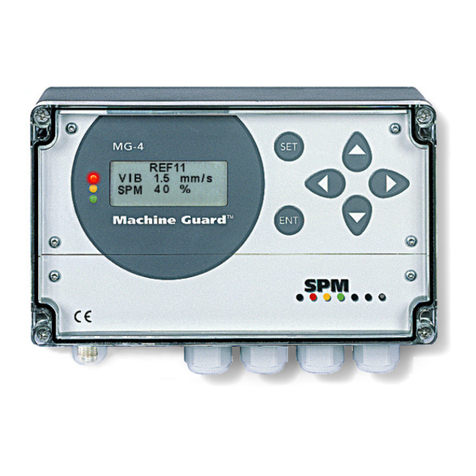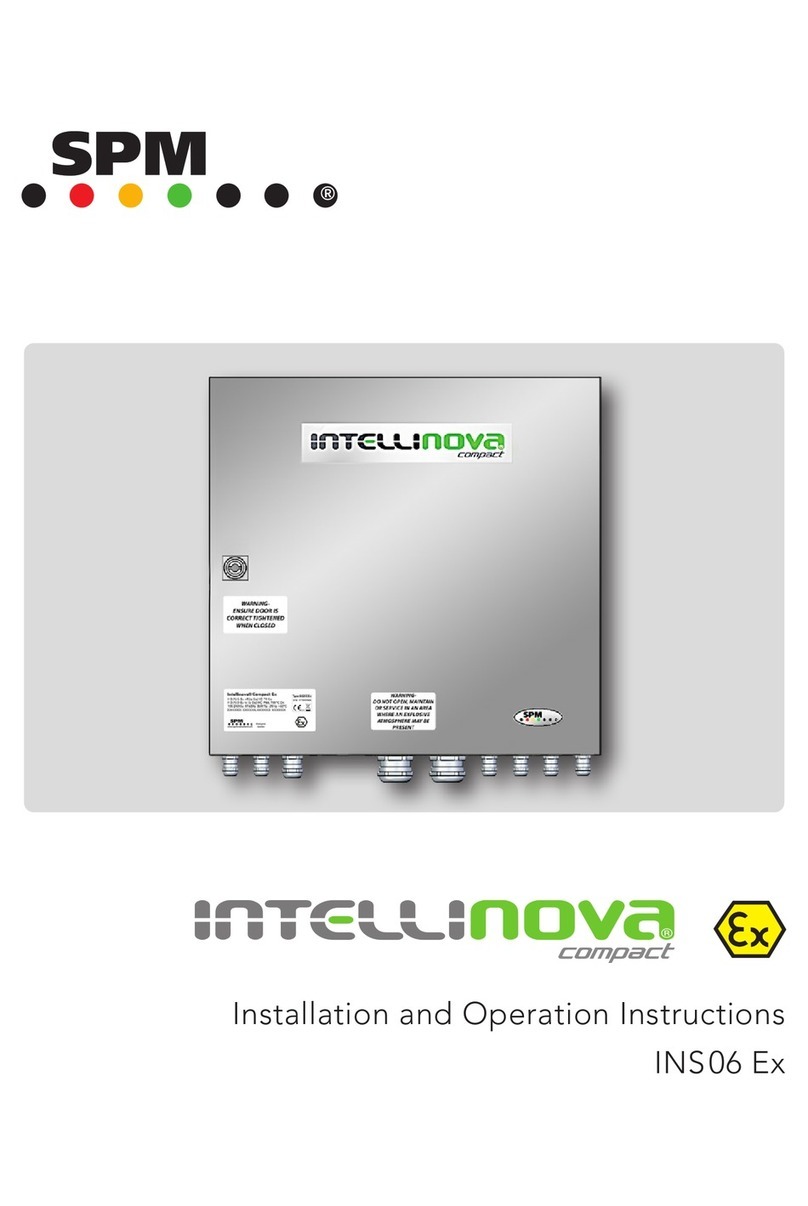
9
Technical data are subject to change without notice.
ISO 9001 certified. © Copyright SPM 1996-9. 71411.B
SPM Instrument AB •Box 4 •S-645 21 Strängnäs •Sweden
Evaluating the lubrication condition of bearings requi-
res a much greater accuracy than the measurement of
bearing damage. Surface damage on rolling elements
and raceways leads to large, easily detected changes
in a bearing’s shock signal, while the changes due to
variations of the oil film thickness in undamaged bear-
ings are relatively small.
Both rolling velocity and bearing geometry affect a
bearing's shock pulse pattern. The A2010 contains
evaluation rules for eight basic bearing types, ranging
from single row deep groove ball bearings to thrust
roller bearings.
Bearing type is programmed as the SPM TYPE No., a
single digit (1 - 8). Rolling velocity is input as the bear-
ing’s NORM No., a number between 10 and 58. Given
the bearing’s mean diameter Dm (or the last three
digits of its ISO number) and its rpm, the A2010 will
calculate and display the NORM number.
The A2010 also accepts a compensation number
(COMP) which can be used to calibrate the readings
from an inferior measuring point.
LR and HR Measurements
The A2010 measures shock pulse magnitude on a
decibel scale, in dBSV (decibel shock value). It takes a
sample count of the shock pulses occurring over a
period of time and displays:
•LR (Low Rate of occurrence), the value for the
relatively small number of strong shock pulses
•HR (High Rate of occurrence), the value for the
large number of weak shock pulses in the pattern.
The difference between LR and HR is called the delta
value. Bearing condition is evaluated on the basis of
the measured values, LR and HR, and the basic bear-
ing data input prior to the measurement.
Error Codes
Given the NORM and TYPE number of the bearing,
the A2010 will first decide whether the measured
shock pulse pattern is within the range of possible
signals from this bearing. If not, the instrument will
display an error code, for instance ”E2 - Disturbance”,
”E3 - Signal too low”, or ”E5 - NORM No. too low".
Input Data for the A2010
Fig. 11
Fig. 12
n= rpm
LR Measured value for strong shock pulses
with low occurrence rate
HR Measured value for weak shock pulses
with high occurrence rate
dBSV Unit for shock pulse measurement
(decibel shock value)
22314
Spherical roller bearing
SPM TYPE No. 7
6410
Deep groove ball bearing
SPM TYPE No. 1
